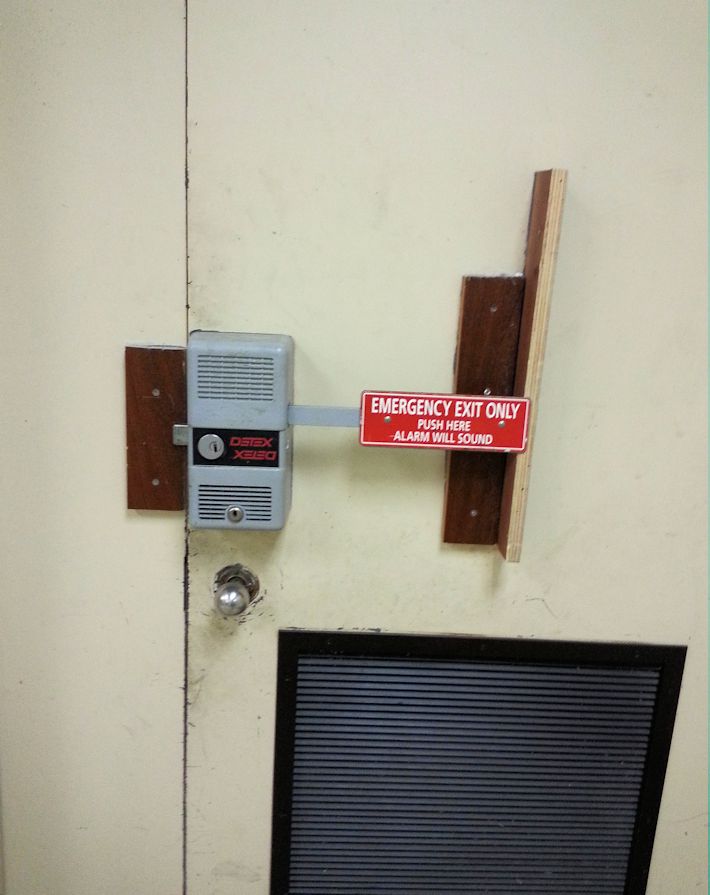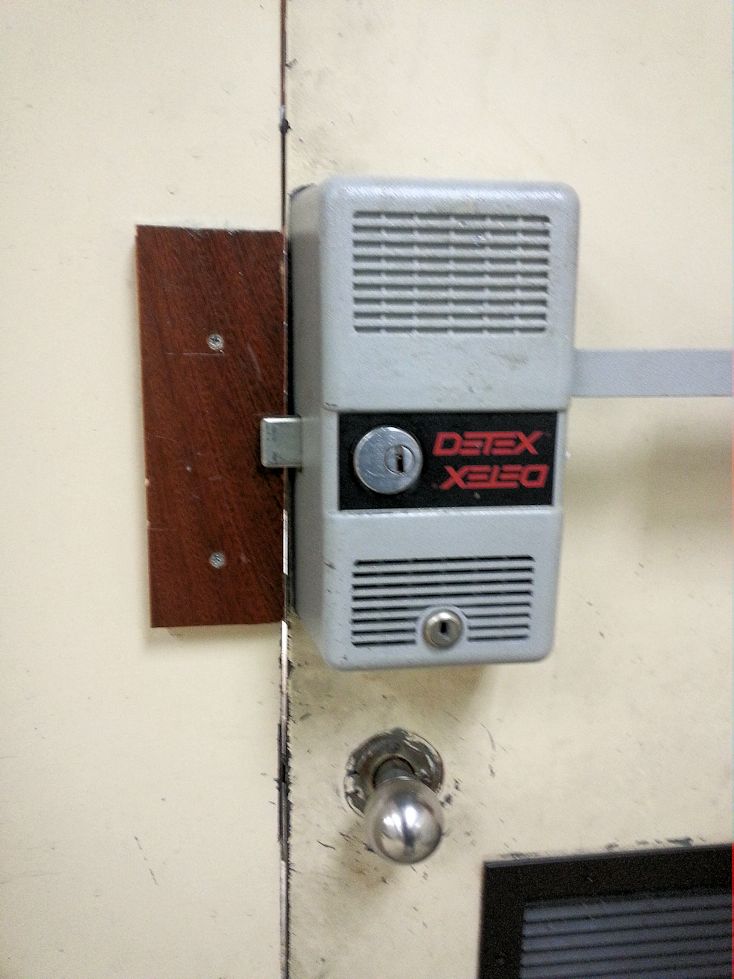Some Fixed-it Friday photos result in mixed emotions – sadness that people resort to these methods, excitement that I have something to share with you that will make you shake your head, concern that the creative application could cause harm. Like these photos from Leo Lebovits of M&D Door & Hardware, taken at a public swimming pool…
UPDATE: There were several questions posted so here are a couple of additional photos. This is an outswinging door, and the knob does have a latchbolt.
~~~
Some of my long-time readers will remember this kid (she’s the one who had her thyroid removed)…
You need to login or register to bookmark/favorite this content.












Enjoyed your pictures of the festival. This week I solved a problem about getting a duplicate key for a Tesa mechanical lock in San Luis Potosi. Enjoyed the vibrant colors. Looks like in either province you have a limited choice on road width. Either you are on a road going to a plaza that has adequate width or you are on side road that two carts can travel on. Housing is about the same. Noticed the Carbona trade name in both cities. Soft drink?
Which way is that door supposed to swing?
I’m pretty sure this violates one or more codes since I see no less than three operations and a special tool to exit this area. Step 1, turn the knob. A knob?? That’s a problem all by itself. I’m also assuming that there’s still a latchbolt though I have my doubts. I suspect it got thrown away the same time the rose did but the knob is still there so people might THINK you have to turn it. Step 2. Take a hammer (special tool) and knock the board out of the way. Step 3 (assuming it only took one whack of the hammer). Push the pad in to exit and hope there’s sufficient clearance to retract the latchbolt.
Mostly sadness on this one.
They might as well remove the opening and Infill to match.
There are so many ways to create a safe exit that doesn’t buzz every time someone bumps into it.
It a bummer this is what people resort to.
Excuse me – but this definitely a Rube Golberg attempt to exclude individuals from using this door. As stated by Mr Holmam – one must either remove the wood accessories blocking the depression of the panic/release device or push hard enough to bend the signage so it works efficiently. The wooden strike plate is extremely intriguing. If you notice the knob and tail piece have been pulled out far enough, rose is missing, so there is most likely no interaction with the release mechanism to release the latch – if it still exists. So why is it still there? Where is the frame for this door and what side are the hinges on? Unless the louver is rated this exit is not rated – however there appears to be no Exit Signage above the door? Definitely a code violation in many respects.
Is it my imagination, or is that on the pull side of the door?
What good does a Detex device do you on an inswing door?
I know those paddles have a tendency to get loose and the slightest breeze will move them and set the alarm off, but this is so wrong! I will have to find the photo I took years ago at a Blockbuster in Tulsa. They must of been having this same problem but there solution was a ROLL OF TOILET PAPER behind the paddle. It was really creative as it kept the paddle from moving inadvertently. If it was pushed fairly hard then the roll would just collapse, allowing the paddle to move. Not up to code but clever none-the-less.
It says emergency exit only!!!
Ah,
“””Día de Muertos””
Glad you are mixing in with the culture
This is the fusible link option for the alarmed exit. As soon as the wood burns away you can push the pad and exit……
For all of you who ask, it is out-swinging (I will send in another photo to Lori of the full opening), and the bottom latchbolt is there and yes that’s a second violation.
Leo, that’s wordless
Thanks for the Picutres
What should a building inspector do upon encountering a kludge which is designed to allow an exit to be operated by applying a legally-allowable amount of force [perhaps to make up for a weak or broken spring], but which does not use approved hardware for the task? For example, if there were a couple of standoffs above and below the paddle with a piece of cheap picture-frame material between them and a small sign “Replace only with ACME-4591 picture-frame material”. If the building manager demonstrated ownership of a year’s supply of that material and allowed the inspector to test that it breaks with 4.5lbs of force (and observe the building manager replace it with the same material), should that pass muster?
It really depends on the modification. Using ACME-4591 as part of an egress system doesn’t sound good to me.